Politics
2026 Elections: Ugandans want grid connectivity, reduced outages
In northern Uganda, 49.6% of the sampled voters named the lack of electricity supply in the area as their main issue, while 44.7% said frequent power outages were their main concern.
Paul Mwesigwa, the UEDCL managing director, said they have kick-started investments into the network that are aimed at addressing the core causes of the outages.
By: Benon Ojiambo, Journalists @New Vision

THE CITIZENS' MANIFESTO
The Sebei sub-region is a host to Siti 1 and Siti 2 small hydropower plants with a combined installed generation capacity of 21.5 MW. With their connection to the national grid, residents would expect to have a stable electricity supply in the region, but what they are currently experiencing is a far cry from their expectations.
Joel Cherop, a prominent farmer in Kapchorwa district, says they have not seen any benefits of having two small power plants, as power outages and supply interruptions have remained rampant.
Cherop explains that the situation is worsened by the fact that the responsible authorities are not offering any explanation for the interruptions and what they are doing to remedy the situation.
“Even leaders in the region are not concerned about fighting for their people and holding the authorities to account,” Cherop told New Vision.
The same thoughts are shared by Joseph Mwangutsya, a Kween-based businessman, who says some of the financially able people have already resorted to alternative sources like generators to meet their energy needs.
This is just a snippet of the key issues that were identified by Ugandans in the Citizens’ Manifesto, a survey conducted by Vision Group ahead of the 2026 general election.
The survey, among others, sought to assess voter perceptions on key political, social and economic issues shaping the 2026 general election and identify critical policy issues that citizens expect political parties and candidates to address.

Energy minister Ruth Nankabirwa switching on a light bulb during the launch of Electricity Access Scale-up Project in Katakwi in February 2024.
Key survey findings
In the survey findings, 13% of the respondents mentioned energy as the main issue affecting their communities, placing it ninth on the list of priorities.
Under the energy sector, respondents identified ‘inadequate power supply and frequent outages’ as the predominant issues.
The issue was most cited in the Sebei sub-region, with up to 36% of the respondents ranking it highest.
Sebei was followed by the Lango sub-region, where 18% of the respondents reported inadequate power supply and frequent outages as their main issue.
The survey findings indicate that this was consistent with the range of 13% and 15% of the respondents from most regions who reported the issue.
Nationally, 49.1% of the respondents interviewed in the survey named frequent outages as their main concern.
This was followed by a lack of electricity supply, which was mentioned by 40.5% of the people interviewed.
In the central region, 68.7% of the sampled respondents named frequent outages as their major concern ahead of the 2026 general election.
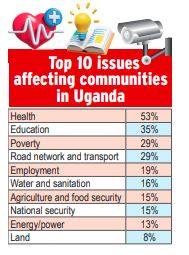
This was followed by a lack of electricity access in the area, which was mentioned by about 20% of the respondents as their major issue.
In eastern Uganda, 47.4% of the respondents cited frequent outages as the major challenge they face.
On the other hand, 45.5% of the voters singled out the lack of electricity supply in the area as the main issue they would addressed.
In northern Uganda, 49.6% of the sampled voters named the lack of electricity supply in the area as their main issue, while 44.7% said frequent power outages were their main concern.
On the other hand, 47.6% of the interview respondents cited a lack of electricity supply in western Uganda as their major concern, while 38.6.7% named frequent power outages as their main concern.
Other major concerns named by respondents across the country included high cost of electricity, high installation fees, reliance on solar and delayed connection to the national grid.
Currently, the first 15 units of electricity consumed per month are charged at a lower “lifeline rate” of sh250 per unit for low-income households.
For households exceeding the lifeline threshold, the price per unit over that costs about sh750 per unit.
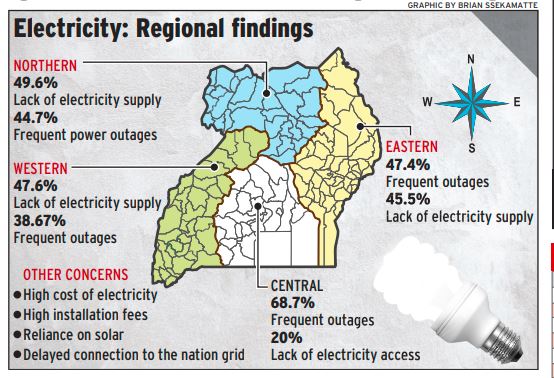
The corruption question
The survey also identified corruption among civil servants as one of the issues that they would see addressed by leaders in the next election cycle. Paul Mwesigwa, the Uganda Electricity Distribution Company Limited (UEDCL) managing director, said his organisation has no room for corruption.
He added that UEDCL has built system controls and a digital environment that eliminates corruption.
He explained that his company has embarked on digitisation as an avenue of eliminating human interaction along the value chain and, in turn, eradicating corruption.
“We have observed that delayed services create a room for corruption. So, we make sure that in addition to the digital environment, we don’t delay our services,” he said.
Govt plan
Former ERA board chairperson, Dr Sarah Wasagali Kanaabi, in June said at least $2b (about sh7.1 trillion) is needed in the electricity infrastructure to achieve a stable and reliable supply across the country.
Wasagali said this investment can be spread over different financial years across the entire electricity value chain.
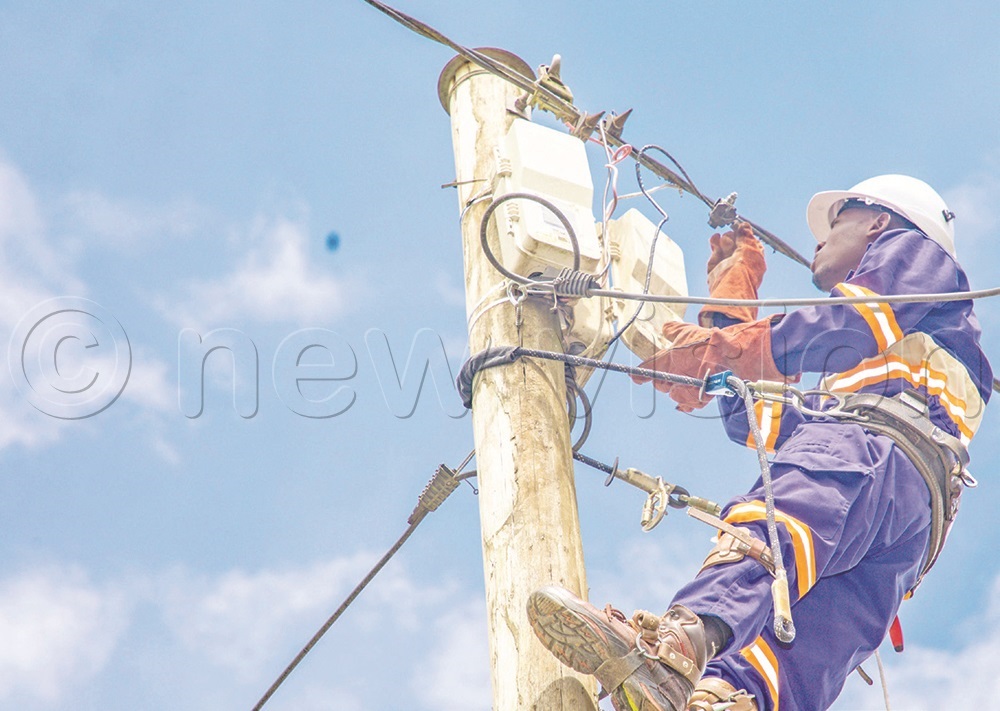
UEDCL is committed to expanding electricity access across the country.
District concerns
At the district level, findings from Mpigi indicate that all the sampled respondents reported high electricity costs as their main issue.
In Wakiso, Kampala, Luwero, Mityana, Mukono, and Iganga districts, more than 70% of the respondents singled out frequent power outages as the major concern they would like addressed.
On the other hand, all of the respondents in Kaberamaido district said they would love to see the lack of electricity in their area addressed.
In Hoima district, poised to become a major development centre due to oil production in the next decade, all the respondents said they want the frequent outages addressed.
For communities living at the landing sites on the shores of Lake Albert, their demand is to get access to the utility so that they can improve their economic fortunes.
“Many landing sites in Hoima don’t have electricity, and most of these landing sites are very busy.
People want to process their fish so that they can get more money, but they can’t do it because they don’t have power,” Geoffrey Kumakech, the Buseruka sub-county LC5 councillor, said.
Just as in the Sebei sub-region, Hoima is home to electricity generation plants like Nkusi and Kabalega.
As such, they are dismayed that several homesteads are not on the national grid.
“As voters, we are concerned because we have a power generation dam, but many homes don’t have power, and even those which have power, the tariffs are very high,” Irene Kansiime, a resident of Buseruka, said.
Frequent outages in the area have also affected the provision of health services, especially at Buseruka Health Centre III.
The facility was severely impacted as a result of the breakdown of the transformer that was supplying the facility about six months ago.
The officer in charge of the health centre, Rostiko Akugizibwe, said patients requiring emergency services during at time face challenges due to the absence of electricity.
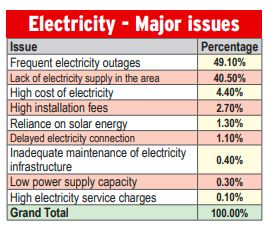
The case of Sebei and Rwenzori
While Lango sub-region is characterised by flatlands, both the Rwenzori and Sebei sub-regions consist of hilly landscapes on the slopes of the Rwenzori and Elgon Mountains.
Uganda Electricity Transmission Company Ltd’s head of corporate and stakeholder affairs, Jonan Kiiza, explained that the Sebei sub-region is served by a distribution line from Mbale-Kapchorwa-Bukwo line, while the Rwenzori sub-region is served by the line that runs from Kabarole to Ntoroko to Bundibugyo.
Adverse weather conditions, especially during rainy seasons, can impact power supply when trees fall.
This makes network maintenance difficult. “Additionally, the existing demand for the Sebei sub-region, for instance, is too low to enable the company to supply the area in ‘island mode’,” Kiiza said.
Current state of the sector
For the last 15 years, the Government has prioritised infrastructure development, including the development of new electricity generation plants, such as Karuma, Isimba and several other small facilities.
This has resulted in an increase in Uganda’s installed electricity generation capacity from 690MW in 2010 to 2,051MW currently.
On the other hand, the high-voltage transmission network has grown from 1,266km to about 5,140km by the end of 2024, according to Uganda Electricity Transmission Company Limited (UETCL).
According to the Ministry of Energy and Mineral Development, Uganda’s access to electricity currently stands at 60% of the households.
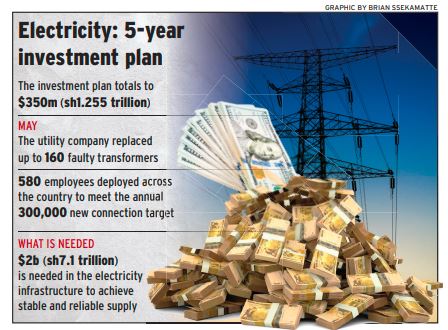
However, only 22% of these are connected to the national grid, while the remaining 38% are connected to off-grid solutions like home solar systems.
Additionally, information from Uganda Electricity Distribution Company Limited (UEDCL) indicates that the agency was serving a total of 2.5 million customers by the end of June this year following its consolidation of former Umeme and its consumers.
Information from the Electricity Regulatory Authority shows that WENRECo, which serves West Nile, has a total of 34,000 customers on its register by the end of March this year.
This indicates a 30.7% growth rate from the 26,000 the company had by March last year.
On the other hand, Kalangala Infrastructure Services, which serves the Kalangala islands, had a total of 5,590 consumers by the end of March this year, compared to 4,828 at the same time the previous year.
While the generation segment registered fast-paced growth, other segments of the value chain, like transmission and distribution, fell short in the development of requisite infrastructure to transmit at high voltages and distribute electrons to final consumers.
The situation was exacerbated during the last years of Umeme’s 20-year concession, as the Government, to avoid a hefty buyout pay, instructed the utility company that controlled more than 95% of the electricity supply to slow investments into the national grid.

Kanaabi Wasagali
For instance, information from the Electricity Regulatory Authority indicates that Umeme invested a total of $272.575m (about shsh972.6b) between 2015 and 2019.
On the contrary, the company investments fell by 30% since 2020, towards the end of its concession, with the firm investing a total of $189.388m (about 675.78b) during the period.
The low investments in the distribution grid coincided with double-digit growth in the demand for the utility.
For instance, the Umeme Ltd’s financial statement for the year that ended on December 31, 2024, indicates that electricity demand grew by 10.8% to 4,674 gigawatt-hours compared to 4,219 GWh registered in 2023.
The statement indicates that this demand was driven by a 14.5% growth in customer grid connections, improved electricity supply reliability, reduction in energy losses and general electricity demand driven by economic activities.
Indeed, the Energy Policy 2023, which is expected to be Uganda’s energy sector guide for the next 20 years, identifies low reliability of power supply as one of the major issues that need to be addressed.
Expert views
Eng. Jimmy Ocen, a renewable energy expert, said there is an urgent need to integrate solar energy solutions into Uganda’s urban electrification plans, especially in under-served municipalities like the peri-urban areas of Pandwong and Pager in Kitgum.
“Expanding the Electricity Access Scale-Up Project to urban slum areas like Pandwong, simplifying connection procedures and reducing bureaucracy at UEDCL offices, providing subsidies or tax relief for small-scale solar businesses and empowering SACCOs to offer low-interest loans for home solar systems,” he adds.
Dr Frank Sebbowa, an energy sector consultant, agrees with the major findings of the survey that respondents cited a lack of access to electricity in their areas.
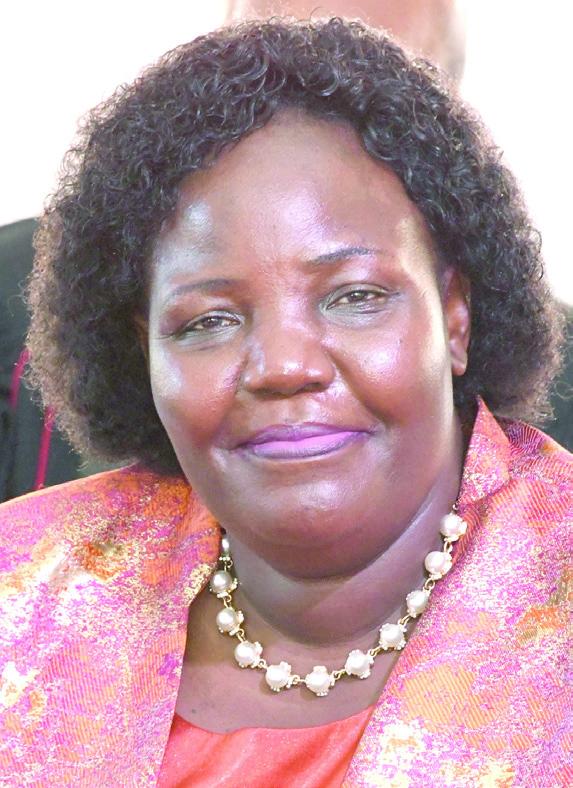
Tibalwa
He reasoned that the Government’s policy to reverse dealings with private players is likely to result in slow mobilisation of resources by agencies like UEDCL, something that is likely to impact access in some areas due to the capital investment needed.
On the frequent blackouts, Sebbowa said we have slightly less money dispatched to UETCL and UEDCL than before.
“Before, it was easy for players like Umeme to mobilise resources whenever they needed, which is not the case with the Government that involves several approvals from institutions.
Such delays the cash flows, even when the money is available, to the utility companies,” he said.
Sebbowa, therefore, advised the Government to prioritise sectors like energy that drive development rather than consumption. “Invest in things that sustain us in future so that when that big consumption comes in future, we shall have a foundation,” Sebbowa said.
What is being done
ERA chief executive officer, Eng. Ziria Tibalwa Waako, acknowledges that low supply, characterised by power outages, remains high in Uganda, averaging 6.3 hours monthly.
Waako explains that Umeme’s capability to mobilise resources to invest in the distribution network dwindled in Umeme’s winding-down years.
“This means that the network went through a period where Umeme was just operating and maintaining it, but they were not upgrading,” Waako said.
She added that UEDCL is currently dealing with a new set of service providers who are sceptical due to the association of the public sector with delayed payments, as opposed to a private company where they could ‘deliver in the morning and be paid in the evening’.
“At the beginning of the UEDCL’s licence, we provided for $74m (about sh265.5b) for investment. I want local manufacturers and service providers not to fear supplying materials because the money is already in the UEDCL accounts,” Waako said.
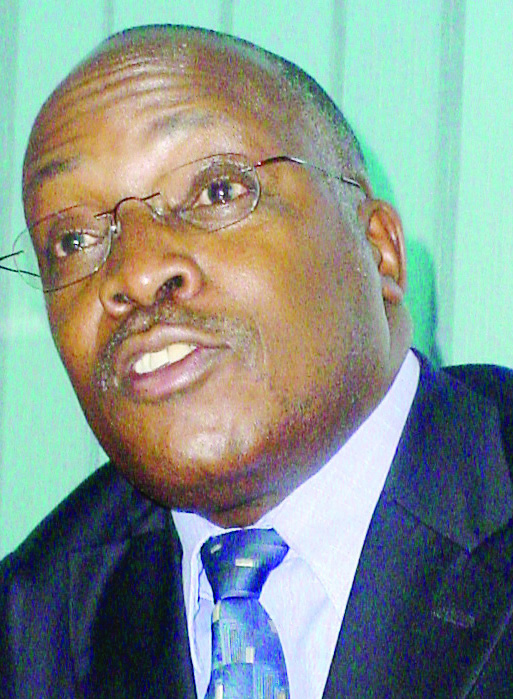
Ssebowa
What’s being done
Paul Mwesigwa, the UEDCL managing director, said they have kick-started investments into the network that are aimed at addressing the core causes of the outages.
He explained that they have activated their $350m investment plant over the next five years, starting off with at least $74m (about sh265b) this year alone, with a target of investing up to $70m (about sh250.6b) per annum in the subsequent four years.
Mwesigwa said UEDCL plans to make transformer injections into the network, starting with at least 518 this year.
He added that they are developing new substations and upgrading those that are already overloaded.
At the same time, he said UEDCL is working on enhancing the backbone of the network through re-conducting the large conductors, as those that the agency inherited from Umeme had been outgrown by the customer load growth.
Mwesigwa is confident that such interventions will, over time, ease the outages that consumers currently experience.
“In the first year, we hope to see stability. By the end of the second, we shall be consolidating that stability as we head towards the smart grid,” he said.
Since April, the company has replaced at least 116 transformers that were found to be faulty.
Information from the company indicates that up to 11 substations are currently overstretched and operating above 80% of their installed capacity, requiring urgent upgrades.
Some of these include Kawanda, Lugogo, Kireka, Mutundwe, Kampala South, Kisugu, Kumi, Mbarara North, Kajjansi and Lumpewe.
On the lack of access, Mwesigwa explained that they have activated the World Bank-funded $638m Electricity Access Scale-up Project, targeting to add up to 910,000 customers to the national grid in the next two years.

Mwesigwa said UEDCL plans to make transformer injections into the network, starting with at least 518 this year.
Voters’ voices
Betty Katende, resident of Nassuuti in Mukono
As business people, we incur losses as a result of continuous load shedding in our communities. Our leaders should task the Government with ensuring that we have steady power.
James Cheptarar Atebeni, Kween county in Kween district
I own a milling machine, and power is a challenge. Our entire region is urbanising yet it does not have a reliable power supply or an office which could offer these services.
Teo Nakidde, Wakiso
I think load-shedding is rampant. I think it is caused by the people who are either working with the power companies or those who lost jobs with power companies. They are the ones who know what to do. The leaders need to come up with a policy for reprimanding such people.
Charles Walusimbi, businessman in Luwero town
I applied for a connection at the beginning of 2024. UEDCL has no answer as to when I will be connected, citing the unavailability of poles. I have been ringing them to enquire. Each time, they tell me to wait.
Morrish Oyet, resident of Gangdyang, Kitgum
I applied for a connection in 2021 through the subsidised programme, but I am still waiting. I ended up buying a small solar panel at sh120,000.
Emma Rose Cherukut, Kween district Woman MP
There is a need to empower local communities by supplying them with sufficient power generated from this area. The current practice of transmitting to Mbale city is unexplainable.
Jessica Chemutai, hairdresser, Kween
My business is underperforming because of frequent power blackouts. We suffer losses because power is very scarce in our trading centre of Binyiny.
Additional reporting by Henry Nsubuga, Frederick Kiwanuka, Job Nantakiika and Javier Silas